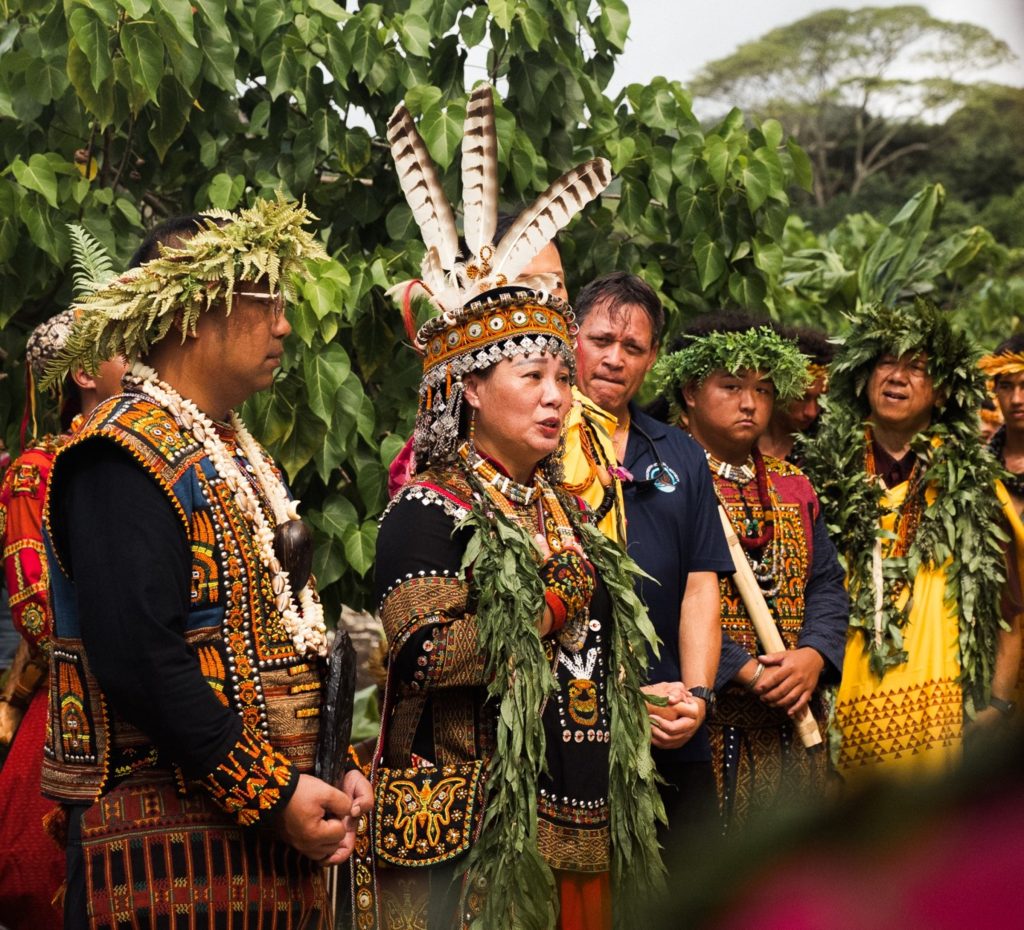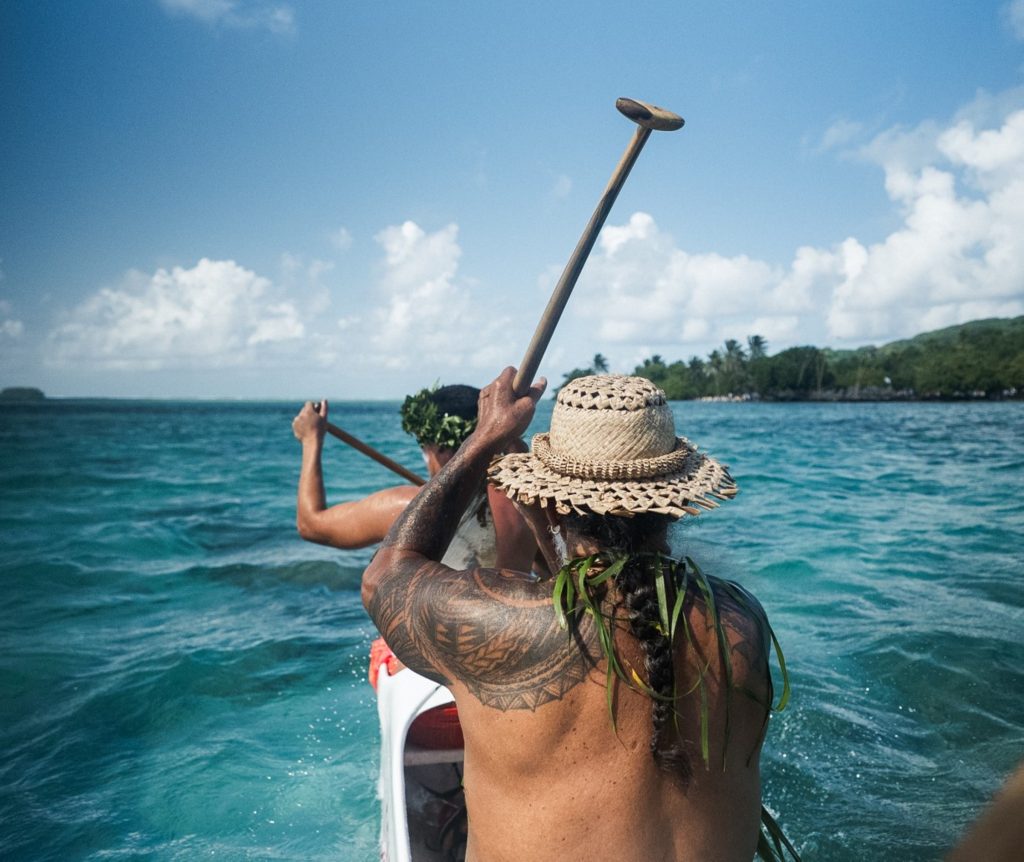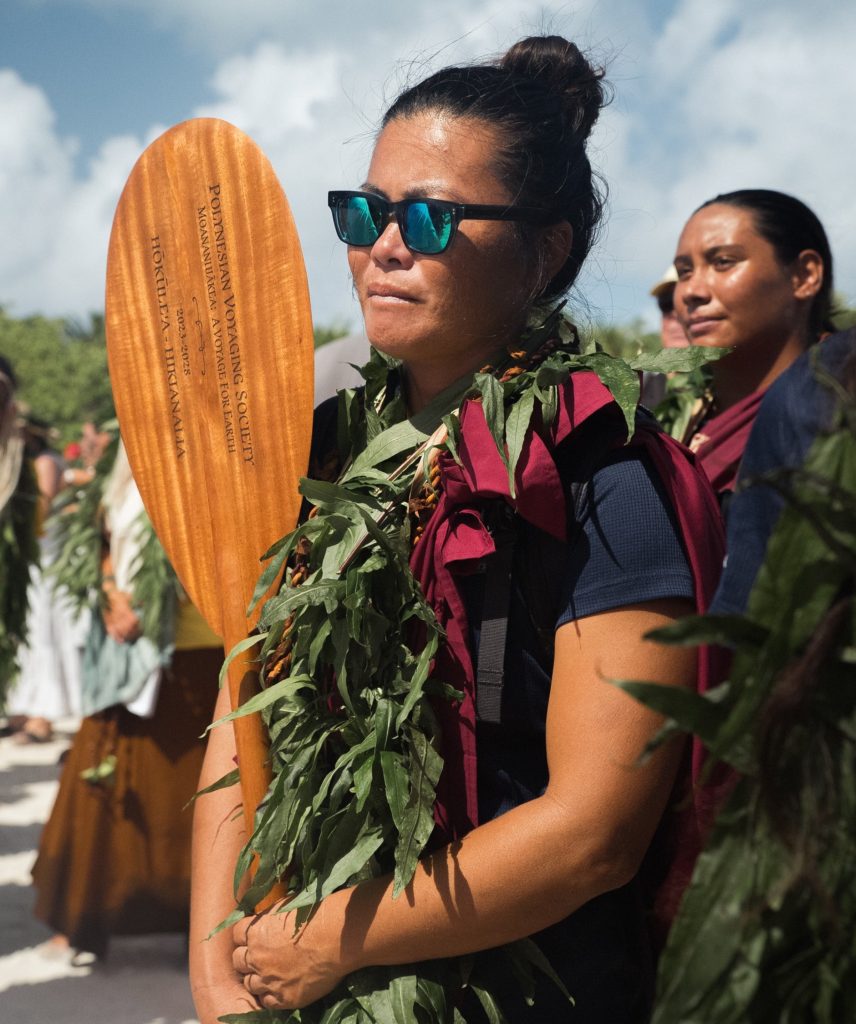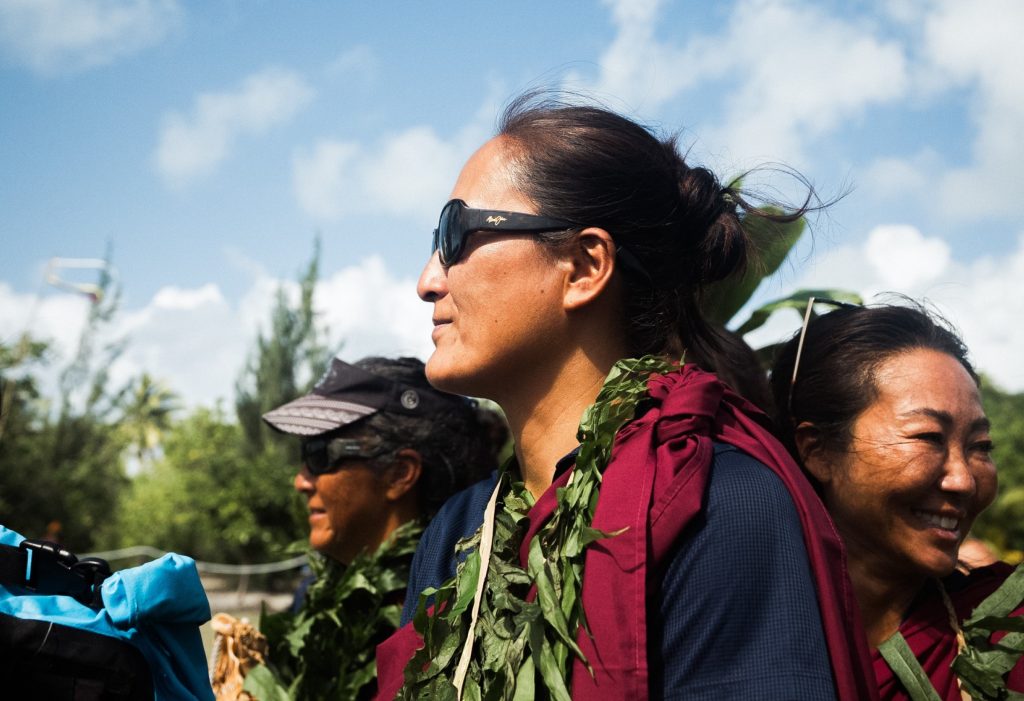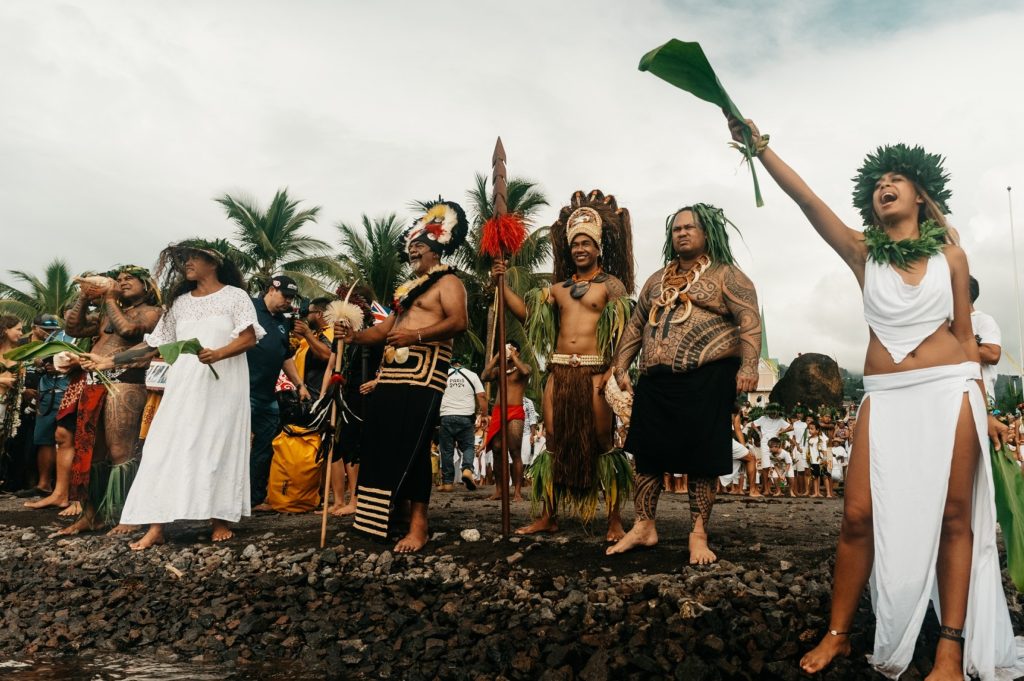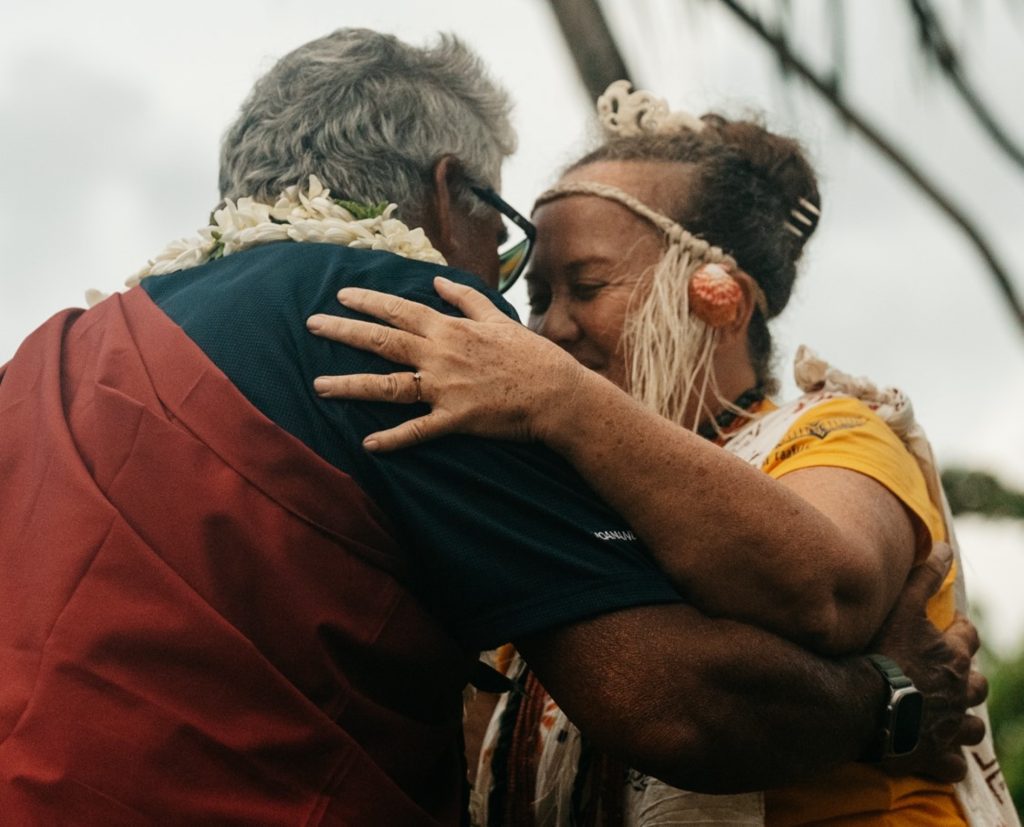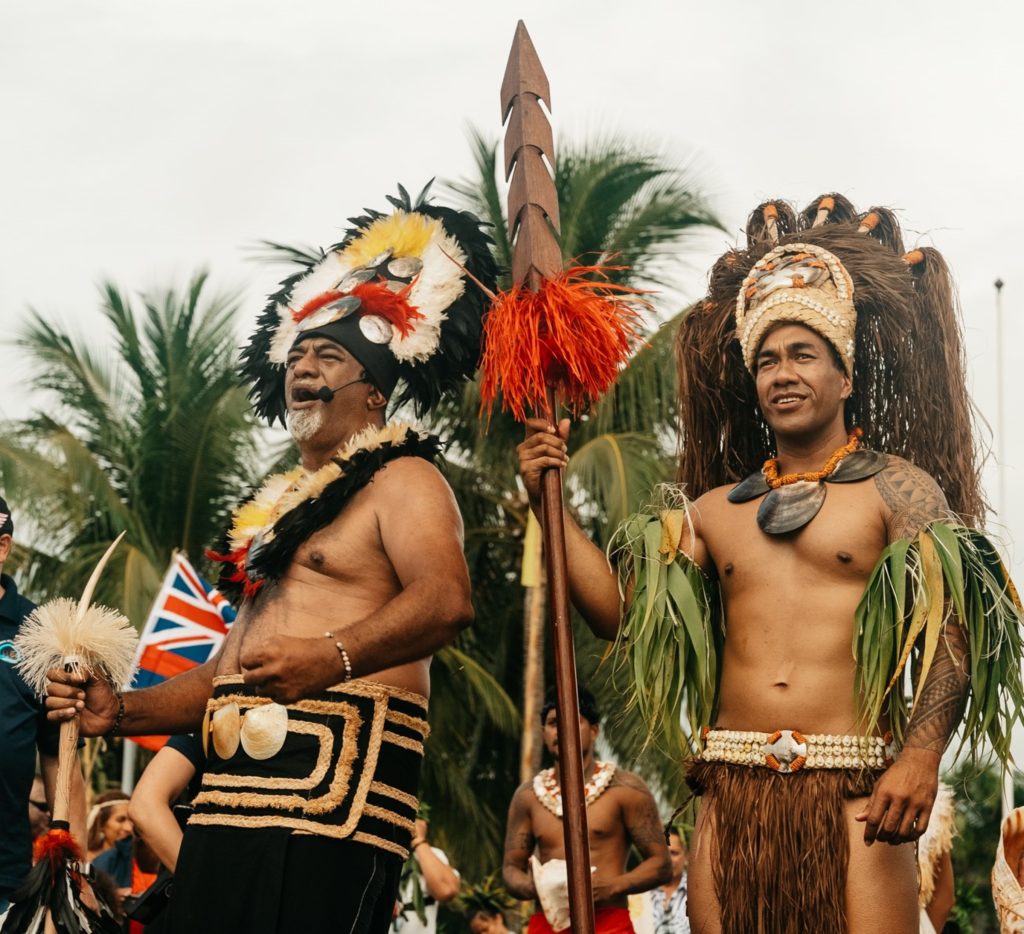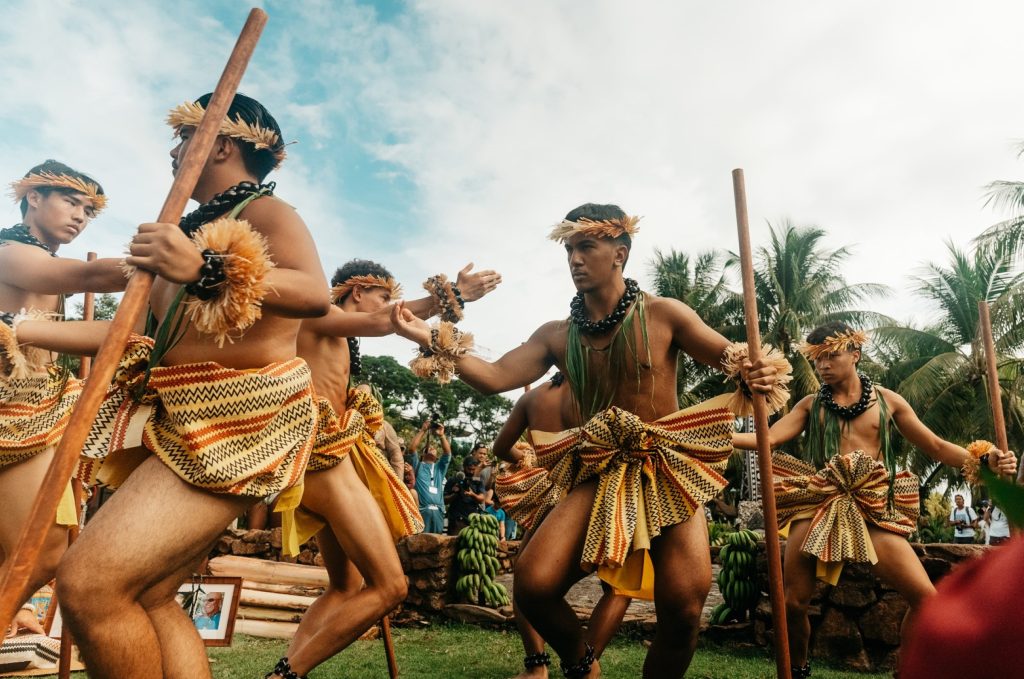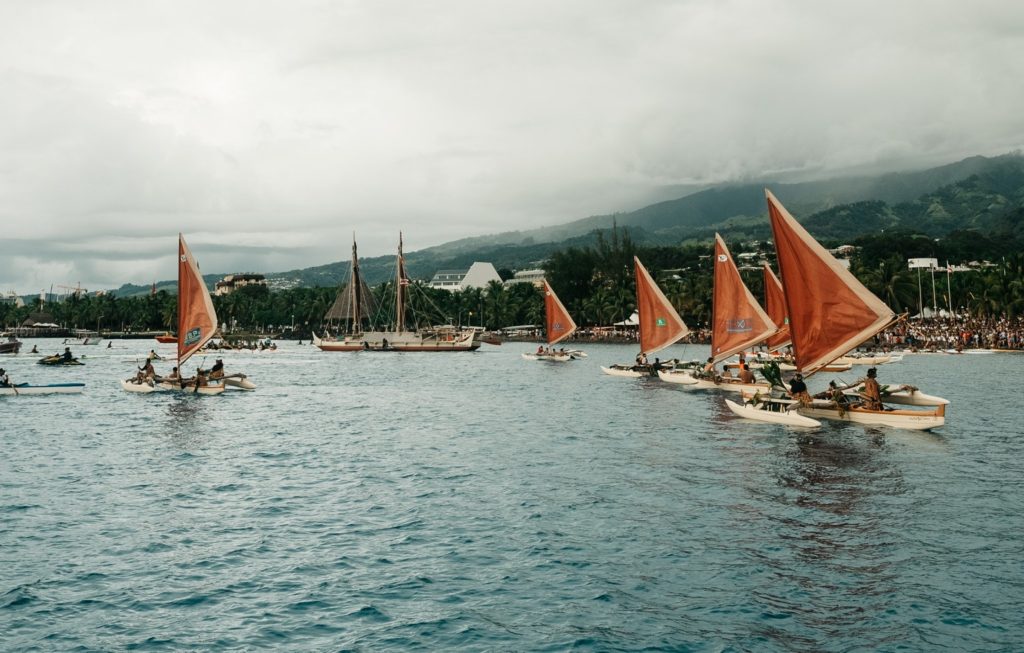‘Homecoming’: Voyaging canoes Hōkūleʻa, Hikianalia arrive in French Polynesia
Polynesian Voyaging Society’s traditional voyaging canoes Hōkūleʻa and Hikianalia, accompanied by Tahiti’s canoe Fa‘afaite, arrived early last week at their first stop in French Polynesia: Taputapuātea.

The double-hulled wa‘a now are anchored off Papeʻetē, Tahiti, departing Taputapuātea early because of forecasted weather.
They are expected to spend about a month in French Polynesia before continuing on the Moananuiākea Voyage, with subsequent stops this year in the Cook Islands, Sāmoa, Tonga and Aotearoa — the Māori name for New Zealand.
Located on the island of Raʻiātea, Taputapuātea is revered as the ancestral homeland and spiritual center of Polynesian voyaging.
This momentous arrival of Hōkūleʻa and Hikianalia followed 21 days and about 2,500 miles of journeying on the open ocean from Hilo, relaunching the Moananuiākea Voyage’s 4-year circumnavigation of the Pacific.
The three canoes entered Taputapuātea’s sacred Teawamoʻa pass, greeted on the water by paddling canoes carrying Taputapuātea cultural leaders who raised their paddles to the sky, symbolically “putting the kapu [sacred restriction] to sleep.”

They then welcomed the voyaging canoes into the lagoon to moor.
Crew members were transported to shore where they stood in the waters to be greeted by Taputapuātea High Priest Andre Maramatoa. Following ancient protocol, the high priest acknowledged the voyagers, inviting them to declare their identity and purpose.
The ceremony included the sounding of the pū, or conch shells; drumming; and chants.
Wearing red kihei, or a ceremonial wrap, the crew joined in a sacred procession to Hauviri Marae for a brief tribute before continuing to the front of Marae Taputapuātea, where they gathered reverently at its entrance.
Crew members and delegations then walked onto the marae to present gifts.
Dignitaries including Taputapuātea Mayor Tawana Thomas Motame, French Polynesia President Moetai Brotherson, Kaviyangan Paiwan Tribe of Taiwan’s princess Zuljzulj Zingrur and Hōkūleʻa pwo navigator and Polynesian Voyaging Society Chief Executive Officer Nainoa Thompson offered remarks, which were followed by hula performed by the Kamehameha Schools delegation.
Taiwan’s Kaviyangon Paiwan people played an ancestral nose flute and burned millet during the ceremony to call upon the spirits.

The ceremonial day concluded with a traditional ʻawa ceremony and a moving performance by a local children’s group, closing with a sense of intergenerational unity and shared purpose.
“It was an honor to be on Hōkūleʻa and to let her go … to allow her to take us to our ancestral home of Taputapuātea,” Thompson said in a release about the canoes reaching French Polynesia. “Coming home is really about recognizing our ancestral family and remembering that family values are the foundation for peace. This arrival was especially meaningful after celebrating the 50th birthday of Hōkūleʻa.”
Taputapuātea is more than a sacred site, it is the piko — the center — of Pacific voyaging heritage.
In ancient times it was a place where navigators gathered to train, exchange knowledge and launch voyages that connected the far corners of the Pacific. As the ancestral homeland of many Polynesian voyagers, it served as a central hub for genealogies and spiritual protocols.
It is from this marae that ancient voyagers and navigators are thought to have departed to explore and settle the Pacific — including Hawaiʻi, Aotearoa and Rapa Nui, or Easter Island.
Taputapuātea is recognized as a UNESCO World Heritage Site and remains one of the most significant cultural and spiritual landmarks in the Pacific.
Its legacy continues to guide and inspire the next generation of voyagers, wayfinders and stewards of the ocean.
Thompson was at Taputapuātea 49 years ago, in 1976, during Hōkūleʻa’s first voyage to French Polynesia, and for him, the connection now shared transcends ceremonial protocol and has become engagement with family of Polynesia — the biggest country in the world.
“To see the elders of Taputapuātea still here today speaks to the strength of our shared commitment to each other,” he said. “Taputapuātea is more than a place, it is a sacred center, and it is now a World Heritage Site, and a reminder that we are one family, one oceanic family, connected by deep roots and an unbroken voyage.”
This is the first time Taputapuātea is the first stop for Hōkūleʻa on a voyage to French Polynesia.
Hōkūleʻa and Hikianalia last visited the sacred site in 2022.
This year’s visit reaffirms deep ancestral connections with Taputapuātea and honors the sacred trust to carry forward traditional knowledge, values and relationships across the Pacific.
Hōkūleʻa and Hikianalia were originally scheduled to stay in Taputapuātea until June 26, but the weather caused them to depart a day early for Papeʻetē.
They arrived June 28 at Papeʻetē to a breathtaking celebration that brought together thousands of people from throughout Tahiti, Hawaiʻi and beyond.

Still accompanied by Tahitian voyaging canoe Fa‘afaite, a fleet of smaller canoes, paddlers and jet skis, the vessels sailed into the harbor in a moment that honored half a century of Hōkūleʻa’s legacy and the ancestral relationship between Hawaiʻi and French Polynesia.
The event held even deeper meaning, as this arrival marked 49 years since Hōkūleʻa made her first historic voyage to Tahiti in June 1976, making landfall at this very same spot in Papeʻetē, which is now named Hōkūleʻa Beach.
That legendary journey ignited a cultural renaissance and proved Polynesians were skilled navigators who explored the vast Pacific Ocean using traditional wayfinding.
Yesterday, Hōkūleʻa returned to the site where her legacy began nearly five decades ago.
“Hōkūleʻa’s arrival here in Papeʻetē is a homecoming, not just for our canoe, but for the values that bind our oceanic family together,” Thompson said in a release sharing the news about the arrival at Papeʻetē. “It was here 49 years ago that Hōkūleʻa reminded us who we are. And it is here again that we celebrate the enduring spirit of voyaging, the strength of our ancestors and our founders and teachers who made this possible.”
Following all the ceremonial formalities — filled with emotion, excitement, pride and reverence — the community gathered for a vibrant concert to celebrate the historic arrival and the 50th birthday of Hōkūleʻa, honoring the canoe that, 49 years ago this month, rekindled the spirit of wayfinding and the kindred relationship between Hawaiʻi and Tahiti.
You can watch the arrival ceremony at Papeʻetē online.
Follow Polynesian Voyaging Society @hokuleacrew on Facebook and Instagram for the latest updates from the voyage.
Live voyaging tracking and updates also can be found on the Polynesian Voyaging Society website.



